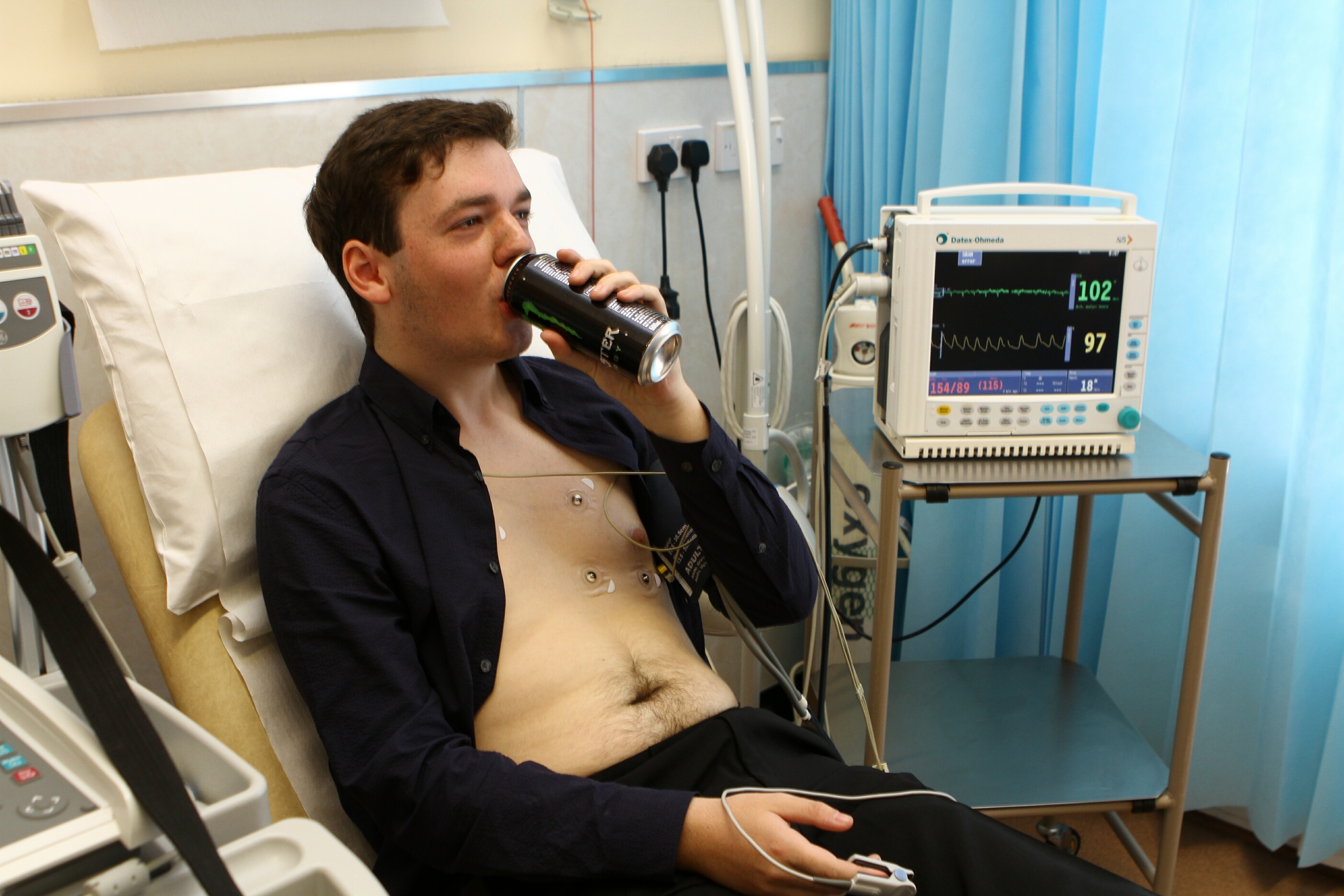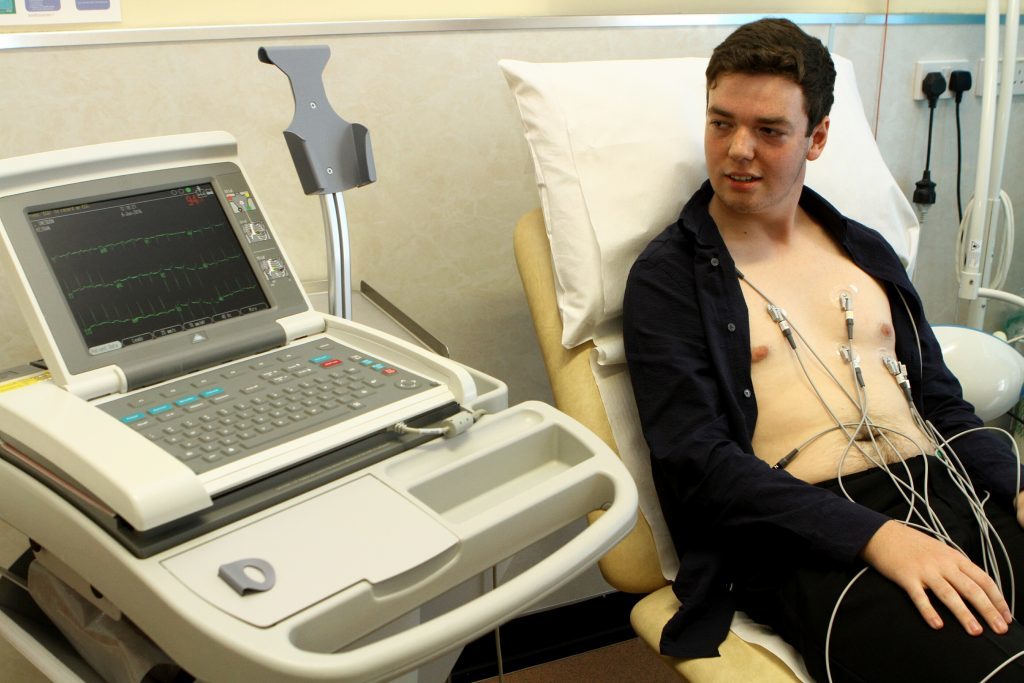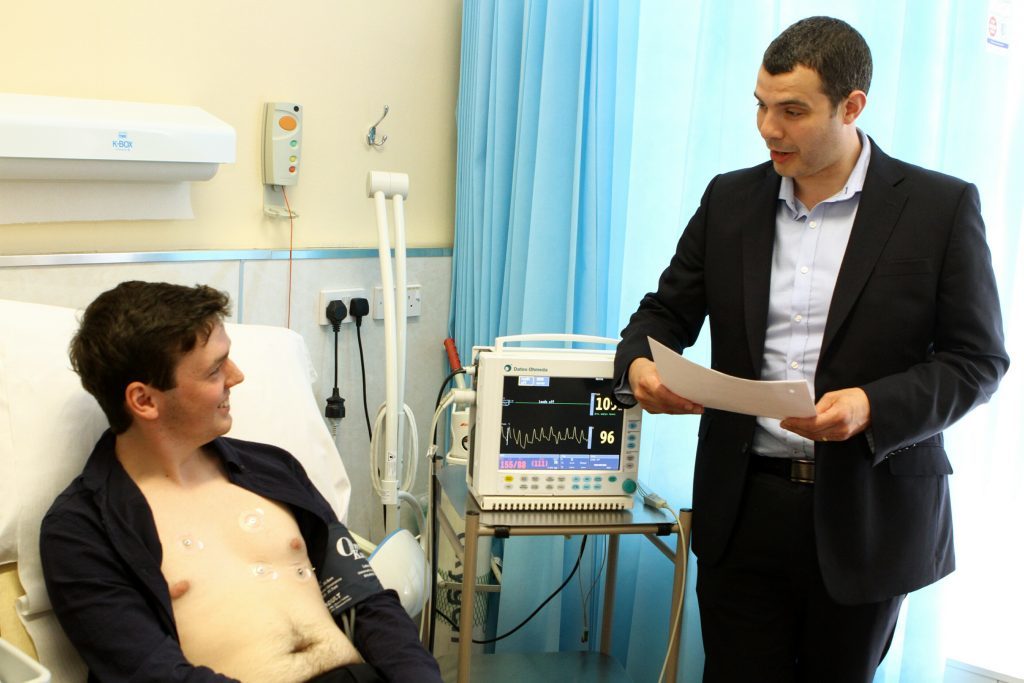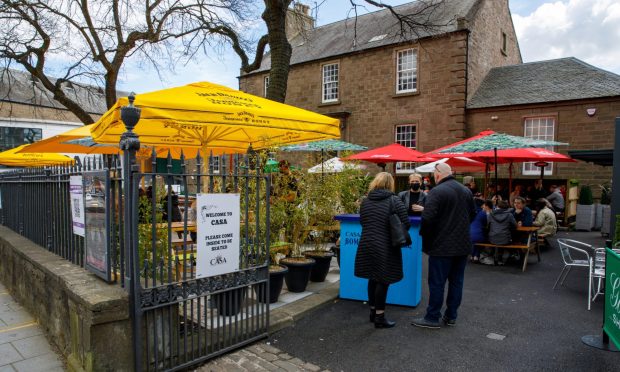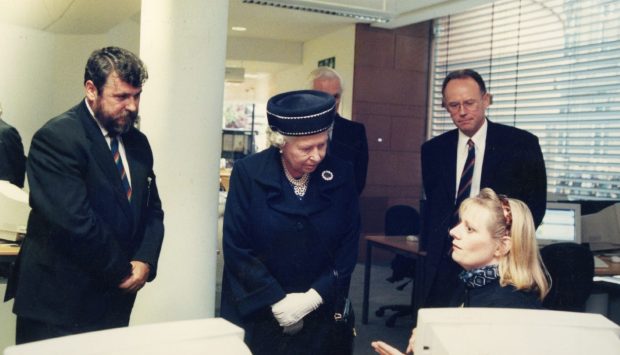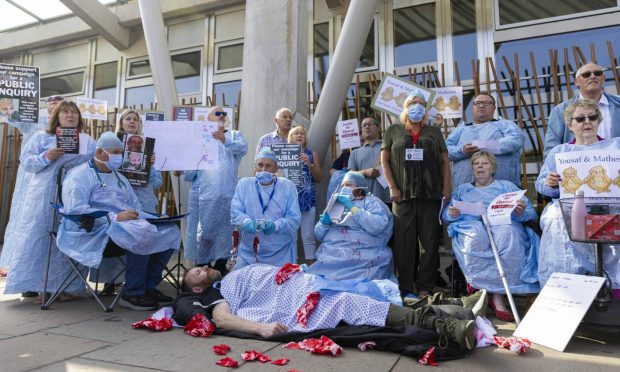As The Courier Can It campaign gathers support, we sent reporter Ciaran Sneddon to test the effects high-energy drinks can have on people’s systems.
To see exactly what effect high-caffeine drinks have on someone’s heart, I was hooked up to a heart monitor as I worked my way through two cans of Monster Energy.
Not many things get my heart racing, but a few £1 energy drinks seem to have done the trick.
Biologically speaking, the results were pretty obvious – a vastly increased heart and breathing rate, and a considerable sugar rush that led to getting the shakes.
My heart rate jumped from a normal 76 beats per minute (bpm) to over 100 within just minutes of starting to drink. It peaked at around 115 – despite the fact that I was lying down, doing nothing other than chatting and drinking. For someone my age, according to Fernbrae Hospital health staff, it should sit somewhere between 60 and 80.
Additionally, someone would typically breathe in and out somewhere between 14-17 times a minute. However, throughout the hour or so that I was hooked up, my breathing jumped all over the place, including a high of 40 – around 2.3 times faster than the expected standard.
Blood pressure also fluctuated wildly, but for most of the time during and following the drinks, sat above normal.
The nurses, who were extremely helpful in explaining what was happening, suggested that this was to keep pace with the increased heart rate.
As I neared the end of the second 500ml can I became shaky, and hours after I’d finished the drink I could still feel the sugar and caffeine working its way through my system.
I’d consider myself a fairly regular-sized adult; my BMI falls in the healthy category and I have no major health problems. If these drinks can have such a marked difference on me, what effect would they have on children drinking the same thing?
The correlation between drinking a can containing 55g of sugar and having a noticeably increased heart rate is unsurprisingly clear.
Each can contains a whopping 61% of your daily recommended allowance of sugar. It’s the equivalent of almost 14 teaspoons of granulated sugar, mixed through a synthetic, chemical-ridden liquid.
Despite the dramatic results, there are two caveats worth making. First, the so-called white coat effect – where blood pressure and heart rate can be increased by the stress of medical surroundings. It’s a fairly common phenomenon, so it is perfectly reasonable to suggest that this may have already heightened both the base and increased levels.
Second, I drank the two cans in around 25 minutes, which is arguably faster than the average drinker.
However, even with those two things in mind, the statistics speak for themselves.
For more on our Can It campaign, click here.
